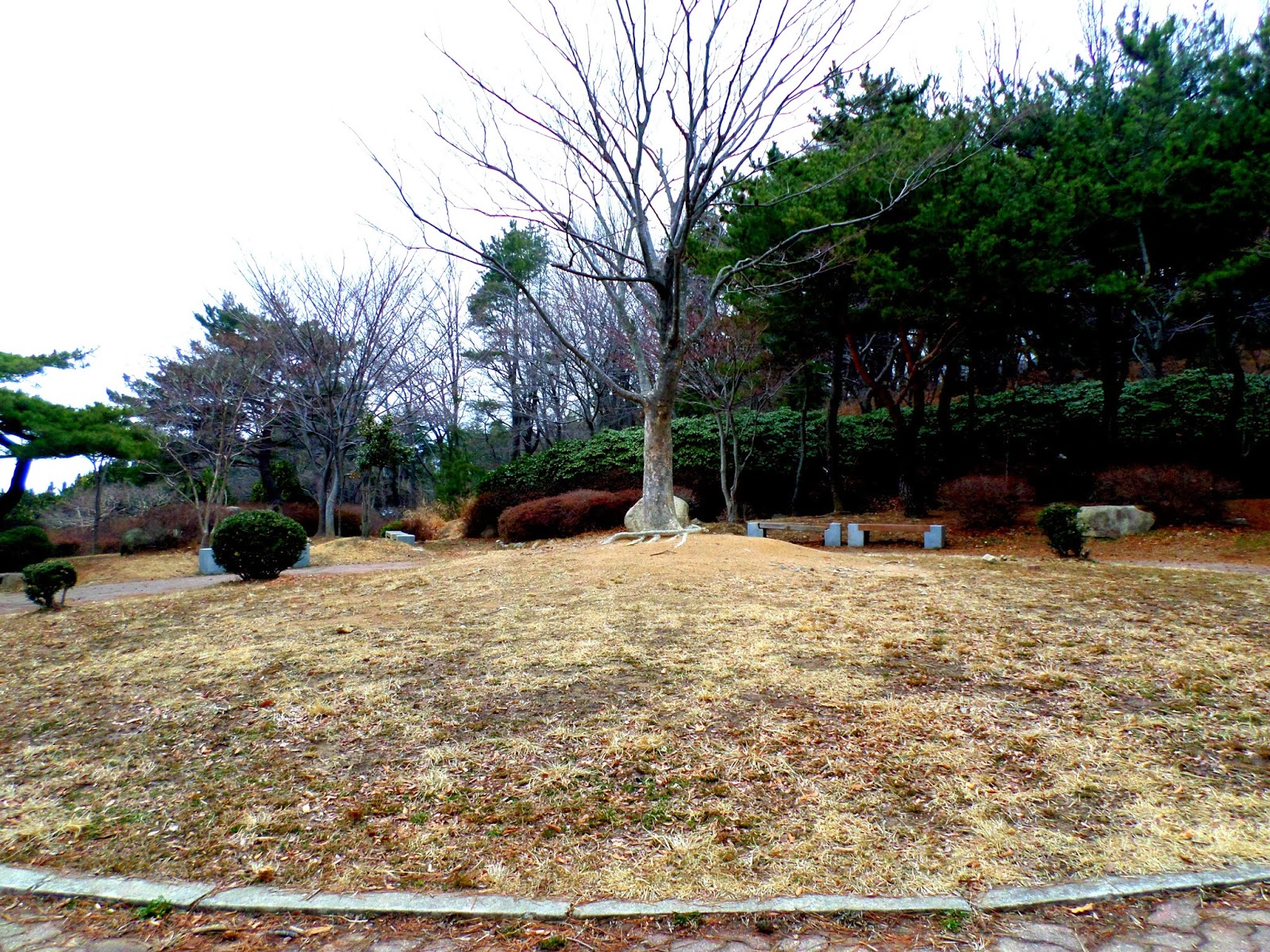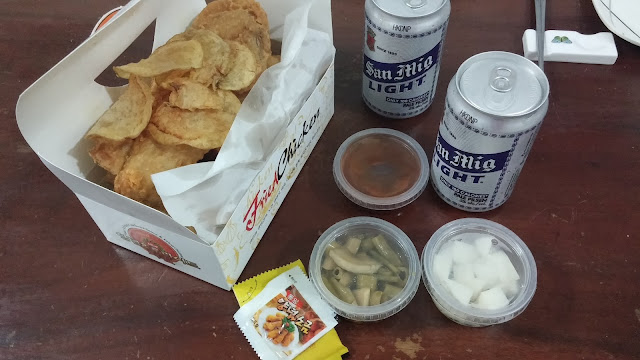LIFE IN KOREA: MT. GEUMJEONG (금정산) IN BUSAN
Mt. Geumjeong where the sun first comes up in the Korean peninsula, is the true mountain in Busan. It looks like a beautiful painting in indian ink with its lush forest and ever-flowing water in every valley and its exquisite features such as fantastic rocks and cliffs made of granite. Mt. Geumjeong is a place for relaxation and a mental prop for people who appreciate long history like that of Busan.
If you're using the subway you can get down to the Oncheonjan (온천장) station.
금강공원 Geumgang Park
You need to ride a cable car (금강공원 케이블카) from Geumgang Park until top of the mountain.
When we arrived at the top of the mountain we're not really that hungry so just ate kimbap and drink some hot coffee because it's cold on the top. And start hiking.
금정산성 동문 East Gate of Geumjeongsanseong Fortress
Located on a 415m-high pass on the main ridge of Geumjeongsan Mountain, the East Gate of Geumjeongsanseong Fortress commands a fine view, in addition to being easily accessible. According to an inscription on the Memorial Monument for the Construction of Geumjeongsanseong Fortress, "The East Gate was built in one month in the fall of 1807 (or the 7th year of the reign of King Sunjo of the Joseon Dynasty)." This gate tower features a rainbow-shaped upper part with a hipped-and-gable roof measuring 3 kan (unit of measurement of the space between two columns) at the front and 2 kan at the side. The gate is 3m wide and the rainbow-shaped upper part is 3.4m high.
Mt. Geumjeong is called A Mountain of a Thousand Turtles and Ten Thousand Soft Turtles because it looks as if a thousand turtles and ten thousand soft turtles cover it. Mt Geumjeong is a popular spot among Busan citizens with its natural attributes and sceneries such as the Three Rocks of Beomeo and 8 Scenic Beauties of Geumjeong attracting many climbers.
제4망루 Watchtower4
Mt. Geumjeong Fortress 금정산성
It has a four gates and towers, but we only saw two of it. It is a natural fortress because of its excellent mountain and castle features. It has gained great popularity among a number of climbers, hikers and mountaineers all year-round as a natural recreation site. It is the treasure of Mt. Geumjeong and the pride of Busan citizens.
원효봉 Wonhyobong
Wonhyobong (687m) is the highest peak on the eastern ridge of Geumjeongsan Mountain. The name means 'the best dawn' as it is embroidered with splendid colors like a plum blossom in full bloom, receiving the light of the sum from the East Sea.
As Wonhyobong is located above the fourth watchtower of Geumjeongsanseong Fortress, you can catch the breathtaking scenery of the East Sea from this peak, which acts like an observatory.
According to a local legend, General Kim Yu-sin of the Silla Dynasty stood at attention for a long time and urinated near this peak when he was training his soldiers, and one of the soldiers planted a pine tree on the spot. It is said that the short pine tree was called the Kim Yu-sin Pine tree and survived for many years with its beautiful green needles. Unfortunately, its location is no longer known.
After the Japanese invasion of Korea (1592-1598) and the second Manchu invasion of Korea in 1636, Geumjeongsanseong was built in 1703 (the 29th year of King Sukjong's reign) as mountain fortress on Geumjeongsan Mountain for the purpose of strengthening the country's national defenses and protecting its seas. It is the largest mountain fortress in Korea. Its fortress wall is 18,845m long and 1.5-3m high, and it has a gross area of approximately 8.2km.
The period of its first construction is not certain in history, but due to the severe invasions by Japanese pirates in the Southern Sea and in the lower basin of Nakdonggang River, it is presumed that the fortress was built during the Silla Dynasty. In addition, there is a record that a Commander-in-Chief named, Yi Ji-heyong, proposed to the king to repair Geumjeongsanseong in 1667 (the 8th year of King Hyeongjong's reign), thus proving that the fortress existed prior to 1703.
Park Tae-hang, the Magistrate of Dongnae, under the proposal of Provincial Governor Jo Tae-dong in 1703, established the foundation of the present fortress. In 1707 (the 33rd year of King Sukjong's reign), the Magistrate of Dongnae, Han Bae-ha, newly built the middle part of the fortress, and then his successor, O Han-won, repaired the damaged fortress in 1808 (the 8th year of King Sunjo's reign). Maintenance and repairs of the fortress began in 1972 after being designated as one of the Historic Sites of Korea and the fortress is continuously undergoing restoration work according to the annual maintenance plan.
Geumjeongsanseong Fortress is located on the lower basin of Nakdonggang River, which was a convenient location to defend itself against invading enemies who infiltrated via the seas, it was also a strategically important area where Dongnae region could be fully full viewed. This is a heritage that demonstrates the importance of national defense in the Busan area during the latter part of the Joseon Dynasty.
North Gate of Geumjeongsanseong Fortress 금정산성 북문
The North Gate of Geumjeongsanseong Fortress is located at a spot about 1.6km west of Beomeosa Temple. It is the most rugged-looking of the four gateways to the fortress. Unlike the other three, this one does not have an arched top; it is also the smallest. The gate has a hipped-and-gable roof measuring 1 kan (unit of measurement of the space between tow columns) at the front and 1 kan at the sides, and is 2.5m long and 3.5 wide. an inscription on the Memorial Monument for the Construction of Geumjeongsanseong Fortress reads: "The work o the castle tower was started in early spring 1808 and completed after 149 days of work, under the leadership of Mayor O Han-won. Thousands of workers were mobilized, columns and beams were brought from as afar as 50km away, and rockes were brought from mountainous areas."
Neodeolgeong Rocks (너덜겅 바위군)
Granitic rocks behind Beomosa Temple in Mt. Geumjeong form a colony along with a valley. People name it as Neodeolgeong, which has a scientific value and an aesthetic beauty.
WATCH THE VIDEO



































































what a beautiful view
ReplyDeletenice scenery love it!
ReplyDeleteI've been there once
ReplyDelete